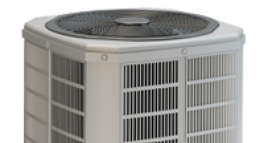The pride of a green lawn in the spring and summer starts in the fall. Overseeding as the weather cools is one of the most effective and most overlooked ways to grow a healthy lawn. Today, we’ll explain what overseeding is, show you some theories about overseeding from experts, and provide a guide for how to overseed.
What Is Overseeding?
Overseeding is simply laying more seed on top of an existing lawn. It’s a great way to revive a patchy or thin lawn.
With summers getting hotter and drier, it’s not uncommon for lawns to experience stress. Additionally, as grasses mature, they’re more prone to thinning. Overseeding is the quickest and most efficient way to combat the effects of age, stress, and damage.
What Are Your Lawn Goals?
Everyone who has a lawn wants it to be green and lush. The best way to achieve this goal is to know the difference between warm-season grasses and cool-season grasses. Fortunately, the name says it all.
Overseeding with a cool-season seed helps patch thin brown spots that have likely appeared in your warm-season grass. Here are a few kinds of cool-season grasses to consider:
- Perennial ryegrass
- Kentucky bluegrass
- Fine fescue
- Tall fescue
Fescues are the most drought-tolerant of the grasses on this list.
In most of the United States, overseeding with cool-season grasses is essential to lush summer lawn. For a map of the kinds of grasses that are best for your climate, check this out.
An Easy Guide to Overseeding Your Lawn
The nice thing about overseeding is that it’s pretty easy. You’ll need a few items and tools to do it right.
- Lawnmower set at the lowest cut setting
- Grass seed
- Fertilizer
- Sprinkler
- Dirt bags
- Gloves
- Seed and fertilizer spreader
- Mulch (optional, but helpful for bare spots)
1. Mow low and clean up
Unlike summer lawn care, you want to mow as low as possible when you overseed. This will give the seed you lay direct contact with the soil and better access to sunlight.
After you mow, be sure to remove clippings, leaves, sticks, and other waste. While it’s a good idea to let clippings lie in the summer for extra nutrients, you want as clean a slate as possible for your cool-season seed.
2. Seed, cover, and fertilize
The easiest way to spread seed is with a spreader. Fill your spreader with your grass seed of choice and spread it all over your lawn. For patchy areas, you can liberally sprinkle seed for full coverage.
Consider aerating your lawn as well. This will help the water sink in and provide further cover for the seed to take root.
If you have bare spots on your lawn, it’s a good idea to cover your seed with a layer of dirt, about half an inch to one inch thick. This will give the seed additional protection from wind and help the seed stay in place when you water it.
If you’re ambitious, you can mix cayenne pepper or human hair (yes, really!) in with the dirt to deter critters like squirrels from digging up your seed.
Once you’ve seeded and covered, spread fertilizer over your entire lawn once, just like you did with the seed. However, don’t overdo it with fertilizer. For example, don’t take a handful of fertilizer and plop it on bare spots, as that can harm those spots.
3. Water and wait
Water your lawn once or twice per day (weather depending), until the new grass reaches the height of the old grass.
Be careful not to overwater. If this is your first time, you may want to keep an eye on the lawn as you water it. When you’ve watered enough, the water should penetrate the soil slowly without pooling.
If the water penetrates quickly, double-check that it isn’t running off. If it is, you likely need to aerate and reseed. Otherwise, continue watering until penetration slows.
Note that you can continue to mow your lawn as needed. However, it’s best to limit activity on your lawn until the new seedlings are at mowing height. Before you know it, you’ll have a lush green lawn to enjoy in the spring.

Choose 2-10 to Help Your Protect Your Home
Overseeding your lawn (or xeriscaping it) is a great way to make your house yours. To protect your house against unexpected breakdowns to important systems and appliances, trust 2-10. With a 2-10 Home Service Plan, you can protect things like your HVAC, water heater, and refrigerator and protect your budget as well.









